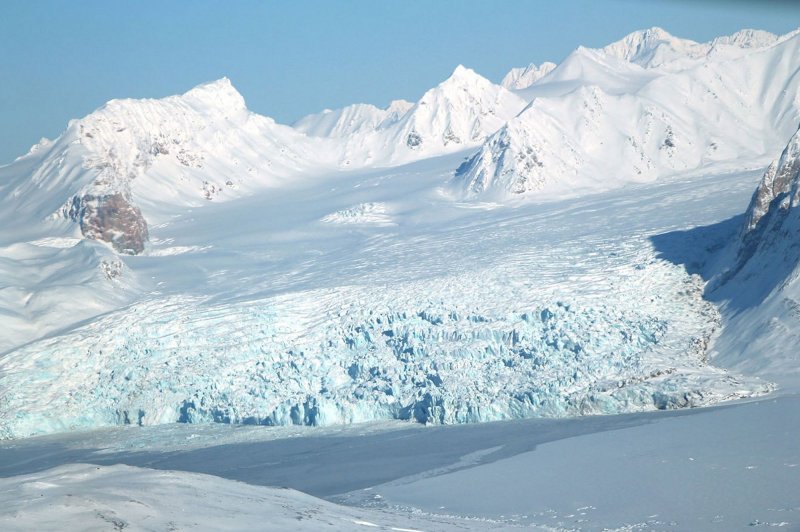Scientists have developed a new technique for constraining the range of predictions produced by sea level rise models, which they said shows potential future sea level rise has been underestimated. Photo by NASA/UPI |
License Photo
Feb. 2 (UPI) -- Most models underestimate the rate of sea level rise, according to a new study.
Researchers at the Niels Bohr Institute and the University of Copenhagen have developed a new method for testing sea level rise models against the historical record.
Scientists described their methodology in a paper published Tuesday in the journal Ocean Science.
"Our study finds a new way to evaluate if models are realistic," study author Aslak Grinsted told UPI in an email.
"This can be used as a constraint on models. If we reject models that are unrealistic, then we should get projections with less uncertainty. It is much easier to plan for a more certain future," said Grinsted, an associate professor at the Niels Bohr Institute in Denmark.
The mechanisms that drive sea level rise -- the melting of glaciers and polar ice sheets, as well as the expansion of warming ocean water -- reveal themselves across expansive time scales.
"The major contributors to sea level rise are sleeping giants with huge inertia," They take centuries to fully respond to a new climate," Grinsted said. "Our observational record is pretty short compared to that."
Traditionally, scientists have tested models of different sea level rise mechanisms -- the melting of Antarctic glaciers, for example -- against historical records of the modeled mechanism.
"To get the best sea level projection you have to base it on the best models of the individual contributions to sea level," Grinsted said. "These model parts are, of course, made by domain experts, and are validated against observations for that process."
On their own, these models often look entirely reasonable. But when they're all combined to simulate global long-term rates of sea level rise, they often produce a wide range of possible outcomes -- and yield lots of uncertainty.
For the new study, researchers deployed a simplified, comprehensive approach to model testing, pitting specific models of sea level rise mechanisms against historical data for total sea level rise -- not against observations of a specific ice loss process.
The analysis showed a linear relationship between global warming and sea level rise, a simple relationship that helped scientists constrain the predictions of more specific ice loss models.
Using the new approach -- comparing models against what are called "hindcasts" of global mean sea level rise -- researchers were able to rule out many of the models' sea level rise predictions and narrow the range of likely outcomes.
The analysis also showed most models are underestimating current and future rates of sea level rise.
Moving forward, the researchers said they hope more climate modeling efforts will use hindcasts to eliminate unrealistic simulation results.
"You can apply our technique to the individual major contributors to sea level rise. For example, you could define a transient sensitivity of Greenland," Grinsted said.
"I hope that this kind of approach can be adopted more widely. It provides a way to compare different models and you can compare to the observed response. There is already a well established literature on transient climate sensitivity. This gives an idea what the concept can be used for," Grinsted said.















